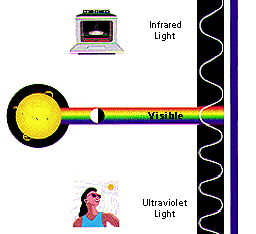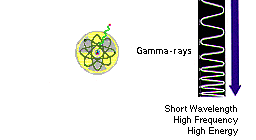
What is electromagnetic radiation?
The electromagnetic spectrum is a map of all the types of light that we can identify. It separates all the types of light by wavelength because that directly relates to how energetic the wave is. More energetic waves have shorter wavelengths while less energetic waves have longer wavelengths. Not all light is in the visible spectrum, which is the light you can see. There are many kinds of electromagnetic waves that you can't see. Just look at the spectrum below.
What is a "detector"?
When we talk about a "light detector", we are referring to any instrument that detects electromagnetic radiation. For example, your eye is a type of light detector. It detects white visible light, which contains all the colors of the rainbow from red to violet.But, remember how we said that some light is "invisible" to the human eye? Well, to detect this type of radiation, we need different detectors to be able to "see" the radiation. X-ray machines, radios, cell phones, and even your television (unless you have cable) are all types of light detectors.
 light movie (4.9 MB)
light movie (4.9 MB)




 Go Back
Go Back Next
Next